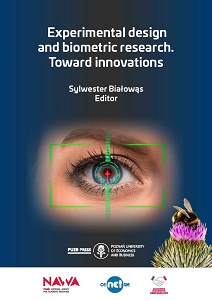Experimental design
Experimental design
Author(s): Sylwester Białowąs, Atanaska Reshetkova, Adrianna Szyszka
Subject(s): Economy, Methodology and research technology
Published by: Wydawnictwo Uniwersytetu Ekonomicznego w Poznaniu
Keywords: scientific methods;experiement;design;
Summary/Abstract: Experiment is a research method appropriate to examine causal relationships, also in relation to the current problems of science, including sustainable development. Conducting experiments can take place in laboratory conditions, but also in natural environments. The main objective of an experiment is always to test what the researcher actually wants and to obtain results that can be generalised to the entire population. In other words, planning experiments requires considering many aspects related to their internal and external validity. The key aspect that needs to be considered in conducting experiments is proper problem defining, as well as the concepts of causality, manipulation or null and alternative hypotheses. It is also worth bearing in mind thatin social sciences, when engaging participants in research, caution must be exercised. Depending on whether each participant of the experiment is exposed to all conditions or different people test different ones, the classification of experiments is distinguished into within-subjects and between-subjects design. In this chapter, the most commonly used experimental designs in this division are presented. However, the experimental method offers more complex schemes such as randomised block design or Latin square design. Finally, the obtained findings should be properly presented—in the form of a report following APA standards.
Book: Experimental design and biometric research. Toward innovations
- Page Range: 9-35
- Page Count: 27
- Publication Year: 2021
- Language: English
- Content File-PDF

